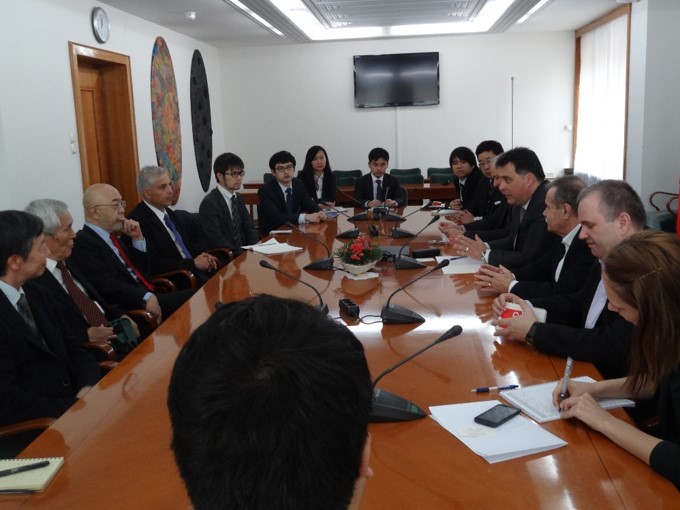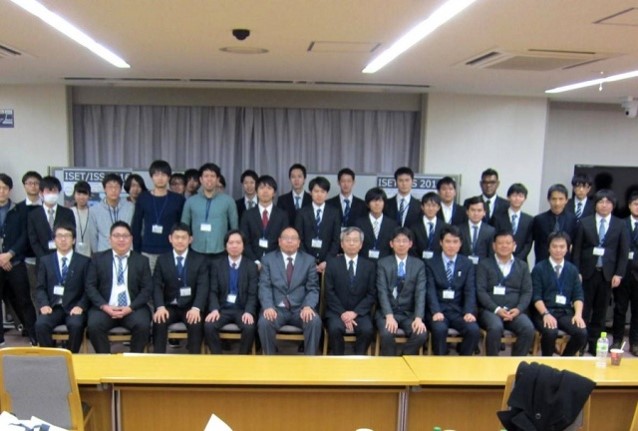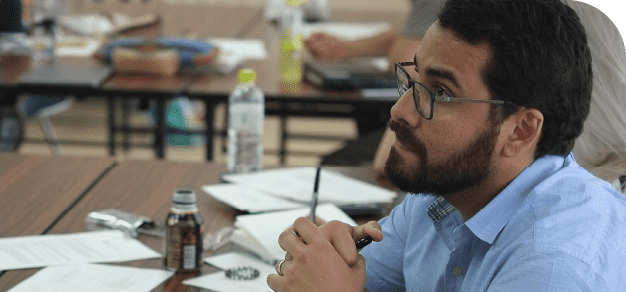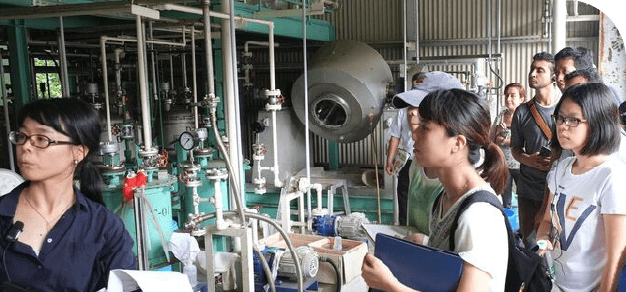GRM Students’ Reports
GRM Program Completion Report
Graduate School of Science and Engineering Arnold Rey Burgos Gines
2019/07/22
The Global Resource Management (GRM) Program provides a practical knowledge and experience in tackling issues in emerging or developing countries especially those related to multicultural coexistence. Ideally, program equips graduate students with knowledge from Science and Engineering and Global Studies in tackling real world problems. Personally, I believe that I gained a broader knowledge and understanding in various current global issues while acquiring practical skills in analysing situations from different perspectives in science and engineering and in global studies. Moreover, the program also trains students not only in practical solutions but also encourages innovative strategies that include consideration of different cultures to promote potential market.
First, I was able to gain an in-depth knowledge of various topics both in Global Studies and in Science and Technology. In Joint Seminar I and On-Site Practice II, the courses dug deep into various aspects of global migration and migrant integration . Although humans have been migrating across continents for a few millions of years, it can still be difficult to grasp an understanding about migration today. The issue at this time was very timely as millions of refugees and migrants arrived in Europe from 2015, many fleeing wars in Asia and the Middle East. This topic can be a bit harrowing as it covers several topics including global politics. The fact is that migration is a global phenomenon and that a profound consciousness about these are necessary if one ought to wish to tackle some of the world’s problems. In Lecture on Resource Management and On-Site Practice I, we covered a copious amount of topics on water resource management especially for the case of major entirety of Kansai and Lake Biwa. It is interesting to know how the many complex systems existing within this body of water coexist without causing adverse effect brought its the complexity. In Selected Themes and On-Site Practice II, I was provided with a broad understanding of several institutions while learning that the word “institution” stand for a variety of meanings. In almost all GRM coursework, I understood the effect of various policies to society, family, natural resources and its impact to the emergence of global trends(like in the case of migration and adoption of modern technologies for the creation of Smart Cities).
Second, I learned to perform analysis and evaluation of certain issues, problems, as well as understand metrics and how and when to apply them. The understanding of how “institutions” work provided me with the tools and metrics to scrutinize various aspects it. I was able to gain substantial skills in performing evaluations, proposing solutions and policies, reading and understanding social trends and linking science and technology solutions to various social problems and issues. Though some output may be primitive in form to contribute any actual impact to the topics, the course exercises were necessary to exhibit how the acquired tools may be applied to more realistic issues in the future.
In Joint Seminar II, the course examined the National Strategy Development Plan 2014-2018 and current status of Cambodia to evaluate the achievements of the program. The group was tasked to identify issues that prevent or slow down development and then construct a solution plan to overcome these issues. The solutions presented were identified from different perspectives taking into account realistic applications and effect of the proposed solutions. The group task encountered several difficulties with communication among the group in addition to unintended conflicting opinions and ideas that, while at first seem to be counterproductive, were actually beneficial in forming more solid arguments when formulating proposals for possible solutions. It was clear that compromise up to a certain degree is necessary especially when attacking a problem from different perspectives.
The ability to propose possible solutions to certain issues is a skill that needs a wide area of knowledge and experience. In some issues, it is required to build a methodology for studying sensitivity of parameters. As some issues require multi-perspective solutions, it is necessary to learn how to apply certain metrics in evaluating systems such as in social dynamics which was presented in the coursework on Recent Trends in Infrastructure Engineering. More elaborately, it dives into the network-based approaches to identify either linkages or disconnects to form the foundation of the modelling framework. This approach seemed complex at first but the overall experience provided me with appreciation in working with social dynamics and was successful in linking various frameworks in understanding social trends.
My experience during the internship provided me with the actualities of working in the industry in Japan. During the internship period, I gained several skills and practical tools that are related to my field. Meanwhile, organizing a conference proved to be an arduous task but the opportunity to share ideas and receive feedback while at the same time learning to work with a synchronized group is an experience that develops the core values necessary for working with teams more effectively.
One of the biggest impact of GRM program to my study is proposing solutions to real world problems through my research. My Doctor thesis involves the design and operation of a sheet plasma device which can be operated at parameters not previously done before. The flexibility of plasma operation over a large parametric conditions is attractive as it enables its application to a wide variety of plasma processes. Plasma surface technology has the ability to change the surface of materials on the microscopic level by process of adding or removing molecules from surfaces to achieve the functionality spanning orders of magnitudes in condition, giving them different characteristics.
The development of coating systems of structure components is also vital in addressing structural corrosions accelerated by environmental damages affecting the functionality of the subjected parts. In certain geographical regions where severe environmental conditions may occur, the application of surface coatings technology to certain materials could provide solutions to common wear and tear problems and material degradation of components exposed to environmental conditions such as higher humidity, constant solar radiation and even chemical reactions and unwanted biological processes. In regions where environmental factors play a huge role in material degradation, the need for the adaption of surface coating technologies becomes relevant. With the growing number of climate-related concerns in technology development, the need to enhance component parts and materials is important. A common practical application is in making certain materials rust-free. It is a vision that I hope would be realized by the designed device.





